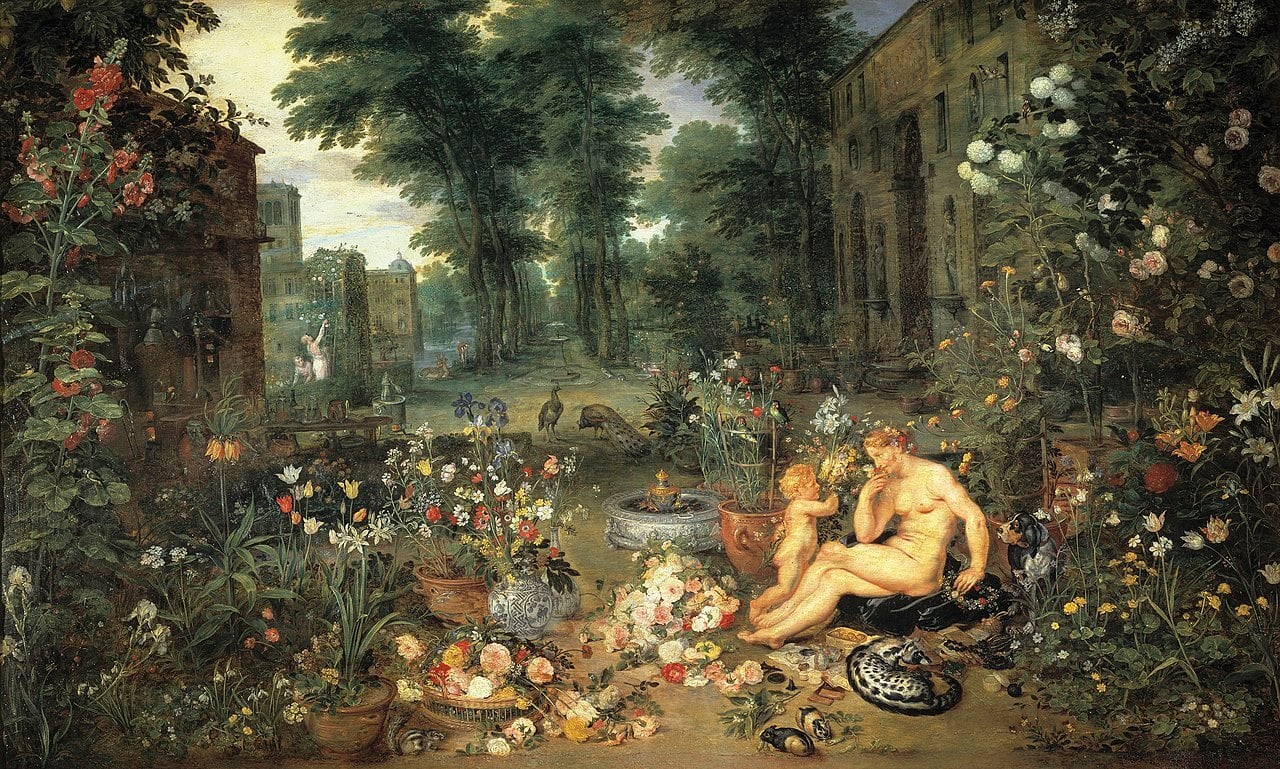
Hundreds of thousands of visitors to Madrid’s Museo del Prado each year pause to take in the lush tableau of Jan Brueghel the Elder’s 17th-century painting The Sense of Smell, in which a reclining nude female with a young child is surrounded by fawning animals, in a scene awash with blooming flora.
Now the Prado is inviting visitors to stop and smell the roses, literally. The Flemish master’s vivid floral renderings piqued the imagination of Alejandro Vergara, the Prado’s senior curator of Flemish and Northern European paintings, who devised a plan to include a unique aromatic accompaniment in a new exhibition, “The Essence of a Painting,” that opened on April 4.
Conceived around the “Five Senses” series, which Brueghel created in Antwerp between 1617 and 1618 with his friend and collaborator Peter Paul Rubens (who painted the allegorical figures), the exhibition foregrounds the idea that painting, rather than offering a mere simulation of reality, could be used to portray a greater likeness to reality itself.
Together with the large Spanish perfume manufacturer Puig, Vergara and the company’s senior perfumer, Gregorio Sola, selected 10 items from the painting—mainly flowers, such as jasmine, rose, spikenard, iris, orange blossom, daffodil, and carnation, but also a fig tree and a children’s glove—to present as aromas alongside it.
Interestingly, the exhibition (on view through July 3) also includes one of the more unpleasant smells, that of a civet, too. This small, mostly nocturnal mammal known for its well-developed anal glands appears in the painting at the woman’s foot, presumably emitting a musky odor.
As visitors enter Room 83, four scent-diffusing stations, each outfitted with the individual aromas, are presented in front of the painting. Viewers are able to isolate and zoom in on the imagery of the painting’s olfactory elements on a screen, releasing the corresponding scent. The machines, called AirParfum and patented by Puig, emit humidity-less particles into the air that can be smelled with a mask on from up to 50 centimeters away. (The museum still requires masks inside.)
Vergara said he decided to incorporate an olfactory element after reading a letter Brueghel exchanged with one of his patrons, the 17th-century Italian cardinal Federico Borromeo. In the letter, Borromeo said that when he looked at flowers painted by Brueghel in the wintertime, he was able to smell the odoriferous blossoms.
“We know about other descriptions of paintings from antiquity and the Renaissance onwards that allude to similar feelings,” Vergara says. “One of the ways people discussed paintings was by their allusion to reality,” he notes, emphasizing that he wanted to create a bridge between the senses.
The use of smell as a trope in the history of art is not necessarily new, however. In 1624–25, the Dutch master Rembrandt van Rijn painted a scentful scene in a work entitled Unconscious Patient (Allegory of Smell), which included a depiction of smelling salts. An exhibition last year at the Mauritshuis, titled “Smell the Art: Fleeting—Scents in Colour,” featured the Rembrandt, alongside other famous Dutch masters like Jan van der Heyden, and included scent dispensers that released odors with the push of a foot pedal.
What makes the Prado’s exhibition unique, according to Vergara, is that it positions the sensory elements in a way that evokes the allegorical potency of painting.
Vergara hopes visitors, too, will see the incredible candor and sincerity that Brueghel and Rubens imbued in these paintings. The works, which have been part of the Prado collection since its founding in 1819, “show a remarkable attention to detail and beauty often overlooked in Brueghel,” Vergara said.
“I had a sense that people do not pay enough attention to Brueghel,” Vergara concluded. “His attention to detail, often miniaturistic, shows a keen sensitivity to the five senses. All that I was really trying to do was call attention to the sense of joy that these works produce in me, hoping that others will see—and smell—this as well.”
“The Essence of a Painting—An Olfactory Exhibition” is on view at the Museo del Prado in Madrid through July 3.